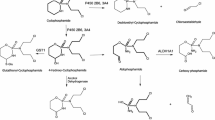Abstract
In order to understand further the effects of Newcastle-disease-virus(NDV)-modified tumour vaccines we investigated the feasibility of isolating lymphocytes from the site of injection of patients undergoing postoperative active specific immunization (ASI) with autologous NDV-modified tumour cells. Delayed-type-hypersensitivity(DTH)-like reactions from five cancer patients were surgically removed, minced and the tissue particles were digested with collagenase and DNase. Lymphoid cells recovered were expanded in a highly efficient limiting-dilution analysis system optimized for T cell growth [Moretta et al. (1983) J Exp Med 157: 743] and lymphocyte microcultures (clonal probability >0.8) could be grown for up to 1 year. Analysis of the microcultures for phenotype and function showed that the majority were positive for CD4 (92%) and TCRαβ (96%). Concanavalin-A-induced production of interleukin-2 (IL-2), IL-6, interferon γ and tumour necrosis factor α was detected in more than 70% of the microcultures. Lectin-dependent cytotoxicity was only very rarely observed. The general characteristics of the microcultures obtained support the notion of a DTH-like reaction taking place at the site of tumour cell challenge. The possibility of in vitro expansion and cultivation of T lymphocytes from ASI vaccination sites should help to elucidate further the role of these cells in active specific immunization against autologous tumour cells.
Similar content being viewed by others
References
Bier H, Armonat G, Bier J, Schirrmacher V, Ganzer U (1989) Postoperative active-specific immunotherapy of lymph node micrometastasis in a guinea pig tumor model. Otorhinolaryngology 51: 197
Bohle W, Schlag P, Liebrich W, Hohenberger P, Manasterski M, Müller P, Schirrmacher V (1990) Postoperative active specific immunization in colorectal cancer patients with virus-modified autologous tumor-cell vaccine: first clinical results with tumor cell vaccines modified with live but avirulent newcastle disease virus. Cancer 66: 1517
Dvorak HF, Galli SJ, Dvorak AM (1986) Cellular and vascular manifestations of cell-mediated immunity. Hum Pathol 17: 122
Fleischer B (1988) Non-specific propagation of human antigen-dependent T lymphocyte clones. J Immunol Methods 109: 215
Foon KA (1989) Biological response modifiers: the new immunotherapy. Cancer Res 49: 1621
Heicappell R, Schirrmacher V, von Hoegen P, Ahlert T, Appelhans B (1986) Prevention of metastatic spread by postoperative immunotherapy with virally modified autologous tumor cells. I. parameters for optimal therapeutic effect. Int J Cancer 37: 569
Ijzermans JN, Marquet RL (1989) Interferon-gamma: a review. Immunobiology 179: 456
Lehner B, Schlag P, Liebrich W, Schirrmacher V (1990) Postoperative active specific immunization in curatively resected colorectal cancer patients with a virus-modified autologous tumor cell vaccine. Cancer Immunol Immunother 32: 173
Liebrich W, Schlag P, Manasterski M, Lehner B, Stöhr M, Müller P, Schirrmacher V (1991) In vitro and clinical characterisation of a newcastle disease virus-modified autologous tumor cell vaccine for treatment of colorectal cancer patients. Eur J Cancer 27: 703
Männel DN, Falk W (1989) Optimal induction of tumor necrosis factor production in human monocytes requires complete S-form lipopolysaccharide. Infect Immun 57: 1953
Miescher S, Stoeck M, Qiao L, Barras C, Barrelet L, von Fliedner V (1988) Proliferative and cytolytic potentials of purified human tumor-infiltrating T-lymphocytes. Impaired response to mitogendriven stimulation despite T-cell receptor expression. Int J Cancer 42: 659
Moretta A, Pantaleo G, Moretta L, Cerottini JC, Mingari MC (1983) Direct demonstration of the clonogenic potential of every human peripheral blood T cell. Clonal analysis of HLA-DR expression and cytolytic activity. J Exp Med 157: 743
Rosenberg SA, Schwarz SL, Spiess PJ (1988) Combination immunotherapy for cancer: Synergistic antitumor interactions of interleukin-2, alpha interferon and tumor-infiltrating lymphocytes. JNCI 80: 1393
Schirrmacher V (1993) Immunity and metastasis: in situ activation of protective T cells by virus modified cancer vaccines. Cancer Surv (in press)
Schirrmacher V, Heicappel R (1987) Prevention of metastatic spread by postoperative immunotherapy with virally modified autologous tumor cells. II. Establishment of specific systemic anti-tumor immunity. Clin Exp Metastasis 5: 147
Schirrmacher V, Ahlert T, Heicappell R, Appelhans B, von Hoegen P (1986) Successful application of non-oncogenic viruses for antimetastatic cancer immunotherapy. Cancer Rev 5: 19
Schirrmacher V, von Hoegen P, Schlag P, Liebrich W, Lehner B, Schumacher K, Ahlert T, Bastert G (1989) Active specific immunotherapy with autologous tumor cell vaccines modified by Newcastle disease virus: experimental and clinical studies. In: Schirrmacher V, Schwartz-Albiez R (eds) Cancer metastasis. Springer, Berlin Heidelberg New York, pp 157–170
Shoham J, Hirsch R, Zakay-Rones Z, Osband M, Brennert HJ (1990) Augementation of tumor cell immunogenicity by viruses-an approach to specific immunotherapy of cancer. Nat Immun Cell Growth Regul 9: 165
Stevenson HC, Foon KA, Kanapa DJ, Favilla T, Beman I, Oldham RK (1984) The potential value of cytapheresis for adoptive immuntherapy of cancer patients. Plasma Ther Transf Technol 5: 237
Weber E, Kees UR, Krammer P Computer analysis of data from limiting dilution experiments of cells of the immune system. DKFZ Research Monograph
Whiteside TL, Miescher S, Hurlimann J, Moretta L, von Fliedner V (1986) Separation, phenotyping and limiting dilution analysis of T-lymphocytes infiltrating human solid tumors. Int J Cancer 37: 803
Author information
Authors and Affiliations
Additional information
This study was supported by Dr.-Mildred-Scheel-Stiftung and the Tumorzentrum Heidelberg
Rights and permissions
About this article
Cite this article
Stoeck, M., Marland-Noske, C., Manasterski, M. et al. In vitro expansion and analysis of T lymphocyte microcultures obtained from the vaccination sites of cancer patients undergoing active specific immunization with autologous Newcastle-disease-virus-modified tumour cells. Cancer Immunol Immunother 37, 240–244 (1993). https://doi.org/10.1007/BF01518517
Received:
Accepted:
Issue Date:
DOI: https://doi.org/10.1007/BF01518517




